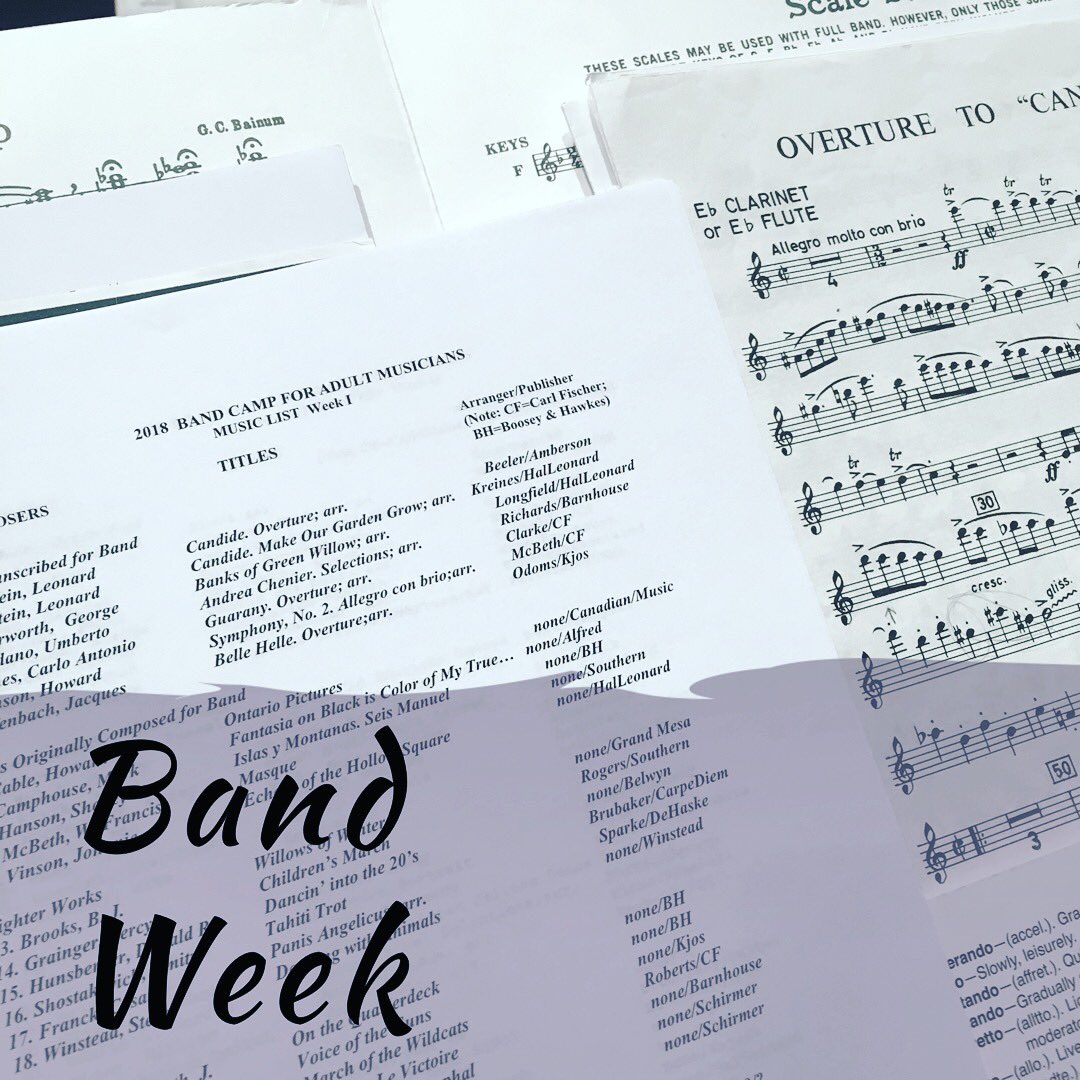

The solos in the Intermezzo are from the solo B-flat cornet part. It is preferable, therefore, that this piece be performed on the instruments indicated in the score. In other words, Holst wants a cornet sound on particular parts and trumpet sounds in others for specific reasons. The music of Holst is written in the British band tradition, which makes use of cornets and trumpets with particular timbral functions assigned to each. In this excerpt, however, it is the solo and second B-flat clarinets that perform a countermelody of running eighth-notes. The solo cornetist must again pay attention to the subdivision played by the clarinets. In Excerpt 2, the tempo can be the same as at the beginning but is sometimes slowed down by four to six beats per minute. This ostinato accompaniment in the clarinets keeps the subdivision slightly in the background, but constant. While the rhythmical values are straightforward in Excerpt 1, the performer must keep the line moving forward and listen carefully to match with the steady stream of staccato eighth-notes played by the E-flat clarinets. The tempo marked on the score for the Intermezzo is “Vivace.” The most common range of tempos displayed on various recordings is quarter-note = 138 to 142. This discussion focuses on the original edition of 1921.

The melodic material and all the expression markings on the solo cornet part are the same in all editions. The orchestration in this edition is lighter, thus abiding more by the wind ensemble concept, with less emphasis on doublings. Colin Matthews edited a new version, which was also published by Boosey and Hawkes in 1984.
Overture to candide clarinet sheet music all parts full#
These full concert band versions contain many doublings among woodwinds and brass. The first was issued in 1921 the second, in 1948, was essentially a reprint of the 1921 edition but with increased instrumentation in order to conform to the size of American school bands. The influence of folksong can be felt throughout the three-movement work and especially in Excerpt 1, which comes from the second movement, “Intermezzo.” Three editions published by Boosey and Hawkes are currently in popular use.

Like Grainger, Vaughan Williams, Bartok, and Kodaly, Holst was an enthusiastic collector of folksongs. Excluding Sousa marches, it is probably the most frequently played composition in the wind band repertoire. Is regarded as the cornerstone of the wind band repertoire and is a first-rate piece in both content and craftsmanship. Conductor Frank Battisti maintains that The First Suite: The appearance of this composition marks the beginning of an era of original works for wind band. The First Suite in E-flat was composed in 1909 and premiered by the Royal Military School of Music Band in 1920. He is especially well-known as the composer of the “astrological” orchestral suite The Planets (1916 ). 52) he also composed operas, ballets, symphonies, songs, and chamber music. In addition to his famous pieces for band (the two suites and Hammersmith: Prelude and Scherzo, Op. (Amy Owens, soprano Katherine Pracht, mezzo-soprano Vale Rideout, tenor Jesse Blumberg, baritone Michael Barrett, Leann Osterkamp, piano)Ĩ:00 p.m.Organist, trombonist, and composer Gustav Holst was one of Britain’s most celebrated musicians. Glitter and Be Gay from Candide (Amy Owens, soprano Michael Barrett, piano)Ħ:00 p.m. - NYFOS Next (songs by Bernstein, premieres by Daniel Sabzgabahaei, Denise Mei Yan Hofmann) Leonard Bernstein: His World Through His Music (Alexander Bernstein, narrator Carla Dirlikov, mezzo-soprano Justin Snyder, piano) Touches (Michael Brown, piano)īridal Suite for Piano 3-hands (Leann Osterkamp, Ursula Oppens, piano) Lamentation from Symphony No.1 “Jeremiah” (Katherine Pracht, mezzo-soprano Michael Barrett, piano)Ĥ:00 p.m. Piano Trio (Osterkamp, piano Nathan Vickery, cello Jin Suk Yu, violin) Sonata for Clarinet and Piano (Igor Begelman, clarinet Michael Barrett, piano) I Hate Music (Amy Owens, soprano Norman Carey, piano) Overture to Candide (Michael Barrett, Michael Brown, piano) The NYFOS Next new works part of the marathon is supported by the Susan W. The Bernstein Marathon is made possible, in part, by a generous gift from Judy Evnin. Presented with the New York Festival of Song and the Ph.D./D.M.A. Curated and hosted by New York Festival of Song’s Michael Barrett as part of the worldwide “Bernstein at 100” celebration.įREE FIRST-COME, FIRST-SERVED. World premieres of new works by contemporary composers who were influenced by Bernstein’s work will add a unique element to the day. A monumental eight-hour concert featuring performances of Leonard Bernstein’s most beloved works and some hidden gems.


 0 kommentar(er)
0 kommentar(er)
